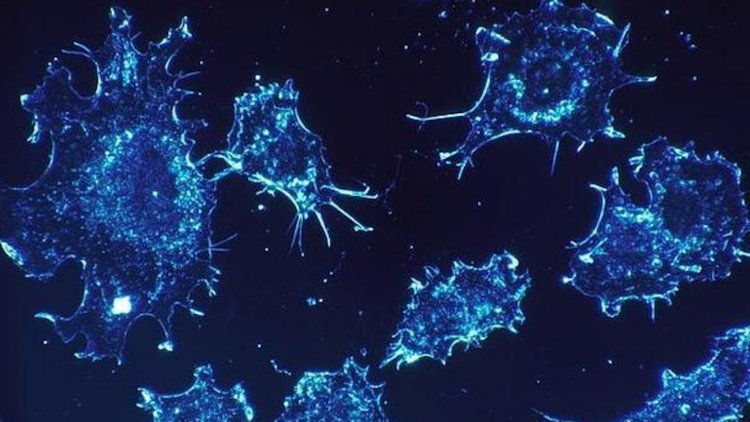February 4, 2020
2m 55s
Share:
Hyperbaric oxygen therapy improves the effectiveness of conventional treatment in its later stage. In addition, it favors the prevention of radio lesions and the reduction of pain associated with radio and chemotherapy since it produces an analgesic action.
According to data from the International Agency for Research on Cancer (IARC) published in 2018, Argentina has an incidence rate of 212 cases of Cancer per 100,000 inhabitants. This figure places the country in seventh place in Latin America and corresponds to more than 125,000 new cases of cancer in both sexes per year. The proportion is similar in men and women.
The Global Cancer Observatory of the World Health Organization maintains that breast cancer is the largest since it represents 17% of all types of cancer in Argentina. In men, the highest incidence is prostate cancer, which represents 9% of the types of cancer that occur in the country.
Risk factor’s
Genetic: Some people may have a greater genetic predisposition than others to develop the disease, although this does not necessarily have to occur. It is a percentage of 5% to 10% of cases.
Environmental: environmental pollution is responsible for 1 to 4% of all cancer cases.
Infectious: some infections are associated with an increased risk of developing cancer, including Human Papillomavirus (HPV), Hepatitis B, Hepatitis C, and HIV.
Radiation: ultraviolet radiation from sunlight can cause skin cancer in people. X-rays, mammograms and CT scans can also affect cells.
Habits: physical inactivity, excessive consumption of fats, alcohol, and tobacco are the main risk factors of this group.
How is cancer detected?
In the initial stage, most tumors have no symptoms. For this reason, frequent medical control is essential to detect cancer in time. Early diagnosis allows a more effective treatment and prevents metastasis or expansion of cancer cells beyond the affected area.
What are the most frequent treatments for cancer?
Surgery: to remove the tumor as much as possible.
Chemotherapy: medicines are used to destroy cancer cells.
Radiation therapy: rays are used to destroy cancer cells.
Bone marrow transplant: allows you to use higher doses of chemotherapy, as the bone marrow produces white blood cells.
Immunotherapy: helps the immune system detect and attack cancer.
Hormonal treatment: eliminating some hormones or eliminating their effects can help slow the growth of cancer cells.
Pharmacological or medication treatment.
Hyperbaric Oxygen Therapy, adjunctive treatment for Oncology
With the advancement of technologies in the treatment of cancer patients, the use of complementary treatments such as Hyperbaric Oxygen Therapy has emerged, a non-invasive method that consists of supplying high concentrations of oxygen in a Hyperbaric Chamber. These larger amounts of oxygen are transported through the blood and reach all the tissues and cells of the body, even those affected.
This is related to cancer because of a lack of oxygen (hypoxia) is related to the difficulties that cells have to take advantage of oxygen. Hyperbaric oxygen therapy manages to recover the functionality of the affected cells and thus physiological processes can be originated to regenerate tissues, heal and reverse pain and inflammation. It also reduces the conditions conducive to tumor growth.
Recently, doctors from BioBarica Spain presented seven cases in which Hyperbaric Oxygen Therapy was effective in the treatment of radionecrosis, wounds, oncological pain and general well-being of cancer patients. They concluded that Hyperbaric Chamber Therapy is an emerging treatment in cancer patients because it is a useful tool for healing and repair of tissues damaged by conventional therapies. Hyperbaric oxygen also produces analgesic action.
The combination of physiological effects of Hyperbaric Oxygen Therapy helps doctors improve the effectiveness of conventional therapy and the patient’s quality of life in the post-cancer treatment stage. In addition, it favors the prevention of radio lesions, the decrease in pain associated with radio and chemotherapy, the palliative care of oncological pain. It is also an adjunct to surgical treatments and of course it has an indication for different types of radiation injuries.
Candidates to receive this treatment should be evaluated by the attending physician. The implementation may be due to the degree of lack of oxygen in the tumor and the healing or analgesic effect that is desired to be added to conventional therapy.
Advised: Dr. Mariana Cannellotto- Medical Director of BioBarica. (MN 108482).
Reference
López, E; Romero-Ferris, D. 2019. Hyperbaric Oxygenation Treatment in Oncology. Clinical Oncology Magazine 2019; 24: 92-96
Share:
Related

